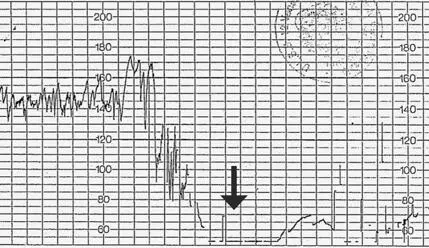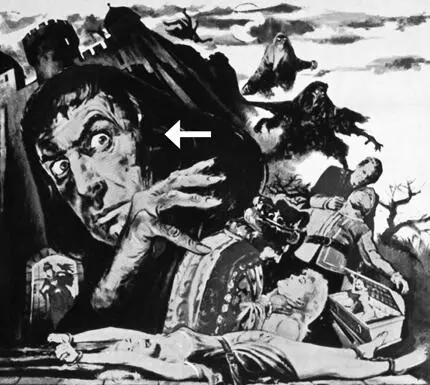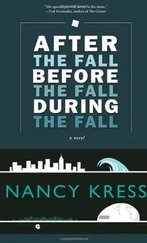What came out of Padua Hospital returned to Padua Hospital.
That’s what Tito’s story is like: circular.
56
The obstetric procedure introduced by George Macaulay consisted of artificially rupturing the amniotic sac in the uterus of the woman giving birth, in order to accelerate labor.
After debating the ethical consequences of the procedure with his colleagues, George Macaulay performed his first amniotomy — on the wife of a haberdasher — using a silver wire.
57
On 30 September 2000, Anna and I crossed the atrium of the Scuola Grande di San Marco, turned to the right, walked through a cloister, went up some stairs and reached the maternity ward of Venice Hospital.
An obstetrician — Dottoressa F — then performed an amniotomy, accelerating Tito’s birth.
Apparently without the slightest concern for the ethical consequences of the procedure, she ruptured the amniotic sac in Anna’s uterus using an instrument known as an amnihook.
58

59
In the previous image: an amnihook.
I blame Tito’s cerebral palsy on Pietro Lombardo, John Ruskin, Napoleon Bonaparte and on an amnihook.
60
Why did Dottoressa F accelerate Tito’s birth?
It was never explained to me.
61
The mistakes made by Dottoressa F during Tito’s birth were fully documented in the case we brought against Venice Hospital.
An amniotomy is recommended only when the mother is already in active labor and the cervix dilated to at least four centimeters. At the moment when Dottoressa F performed the amniotomy, my wife’s cervix was — to use the term in the medical handbook — “impervious.”
An amniotomy is recommended only when the fetus’s head is in the correct position in the birth canal. At the moment when Dottoressa F performed the amniotomy, Tito’s head was certainly not in the correct position, but “very high up (–3cm) and mobile.”
62
The amniotomy performed by Dottoressa F was described by experts as “highly inappropriate.”
The biggest danger associated with an inappropriate amniotomy is what is called umbilical cord prolapse. That was what happened with Tito. When Dottoressa F ruptured the amniotic sac in Anna’s womb, Tito’s umbilical cord collapsed, thus cutting off his oxygen supply.
This in turn caused damage to the brain. That brain damage affected his motor apparatus, creating spasticity.
63

64
In the previous image: the line of the heart monitor indicates the exact moment when asphyxia caused a dramatic fall in Tito’s heart rate.
That was the first of his falls. The original fall.
65
William John Little was the first to study cerebral palsy.
In 1853, after analysing twenty-four spastic children, he published his lecture series in monograph form under the title On the Nature & Treatment of the Deformities of the Human Frame , arguing for the first time that “the spasmodic tetanus-like rigidity and distortion of the limbs of new-born infants [could be] traced to asphyxia neonatorum, and mechanical injury to the foetus immediately before or during parturition.”
66
Some years later, in 1861, at the Obstetrical Society of London, William John Little — basing himself on his analysis of another sixty spastic children — said again that cerebral palsy was the result of birth asphyxia.
To illustrate his thesis, he mentioned the protagonist of Shakespeare’s Richard III .
According to William John Little, Richard III suffered from cerebral palsy.
67
Shakespeare described Richard III as “deformed.” He also called him “unfinished,” “scarce half made up,” “cheated of feature,” “that bottled spider,” “diffused infection of a man,” “that foul bunch-backed toad,” “bloody dog.”
Richard III had “legs of an unequal size.” His arm was like “a withered shrub.” Nature had made “an envious mountain” of his back. He was “disproportioned in every part.”
Shakespeare blamed these deformities on a premature birth.
He tells how Richard III was “sent before [his] time into this breathing world.” He also says that “love forswore [him]” in his mother’s womb.
At the Obstetrical Society, William John Little, quoting from Shakespeare, said that Richard III’s premature birth was secondary to birth asphyxia. And that the asphyxia had caused cerebral palsy.
68
Like Richard III and Tito, William John Little was deformed.
He had contracted polio as a child and this had left him with a club foot. A man with a club foot was the first man to study children with club feet.
69
For Shakespeare, Richard III’s deformed body mirrored his deformed character. His cerebral palsy mirrored his evil nature.
In the first acts of Richard III , he murders nine people, including his closest relatives and his wife.
In the final act, the ghosts of those nine murdered people return to haunt him in a dream.
70
Tito was my Richard III. Tito was my bunch-backed toad.
He seized my throne. He conquered my kingdom. After his birth, I became a ghost haunting him.
71

(Picture Credit 1.6)
72
In the previous image: Vincent Price in Tower of London .
The film was made by Roger Corman in 1962.
Vincent Price played Richard III: deformed, lame, spastic, with a green face.
73
In the case we brought against Venice Hospital, we gave a minute-by-minute account of Tito’s birth, based on the data from the heart monitor.
12:35 Normal.
12:40 The needle on the heart monitor suddenly shook. I called the nurse, thinking that this was the first sign of labor. In fact — as I said — this was the first sign of the asphyxia that caused Tito’s cerebral palsy. The nurse tried to phone Dottoressa F, but couldn’t locate her. She decided to go and look for her. A few minutes later, they returned together.
12:46 Dottoressa F turned off the heart monitor.
12:55 Dottoressa F turned on another heart monitor.
The nurse explained that the previous week one of the machines had failed. During Tito’s birth, the first thing to fail was Dottoressa F. As the monitor had correctly shown, Tito was dying.
13:05 Anna was finally taken into the labor ward.
74
Tito was born forty-five minutes after that first fall in his heart rate. According to medico-legal experts, an emergency caesarean like his should have happened less than twenty minutes later.
Another mistake on the part of the hospital.
75
In 1487, in Germany, Inquisitor Heinrich Kramer, a Dominican friar, published his Malleus maleficarum .
Chapter XIII of Part II deals specifically with “witch-midwives who commit most Horrid Crimes when they Kill Children.” Heinrich Kramer, in Malleus maleficarum , recommended that these witch-midwives should be imprisoned and tortured by the religious authorities.
In the last five hundred years, torture has largely fallen into disuse. Despite all the mistakes made during Tito’s birth, all I could demand of Venice Hospital was financial compensation.
Читать дальше















